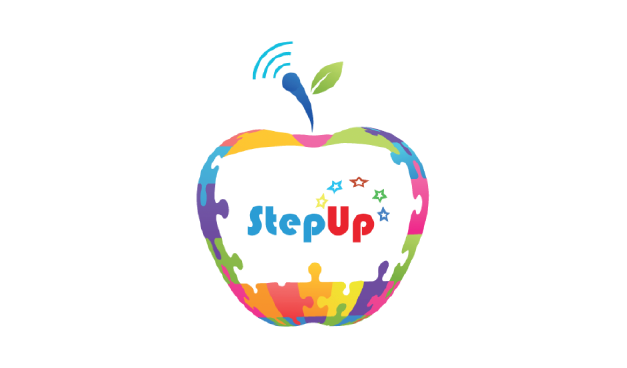Can bullying be overcome by Kindness
Being Kind is not easy. In fact, it is very complex. If kindness had been a simple behavioral trait, then everyone would have been kind, and no one would have experienced meanness or bullying. A world in which Kindness is the norm is an ideal world. When we ask if it is possible to have homes, schools, communities where Kindness is the norm, the answer would be Yes. However to do so, we need to teach, model, and reward kindness.
For being kind, one needs to think about the needs and concerns of others. Inculcating the behavior of volunteering to help others and work for that affect their communities helps in developing Kindness and empathy. Compassionate thinking and generous actions demonstrate kindness.
Unfortunately, in many schools, negative behaviors such as bullying results in punishment which is thought to reduce this kind of behavior in the future. On the contrary, research shows that for “zero-tolerance” and to end bullying and violence punishment-based approaches do not work. Given this knowledge, it makes better sense to focus on teaching and modeling behaviors such as kindness and empathy.
Ways to Teach Kindness
• Mindfulness involves becoming aware of the specific thought, emotion, or behavior. This means that by being mentally flexible, and through training, even young children can learn kindness.
• Social-Emotional Learning (SEL) teaches kindness by focusing on cooperation, responsibility, self-control, empathy, and provides specific actions to build these skills.
• Acts of Kindness are actions such as doing something nice to others. Doing acts of kindness cause positive ripple effects to those who experience and witness kindness.
Impact of Teaching Kindness
Elementary school students who performed three acts of kindness per week saw that they were significantly more accepted by their peers compared to kids who did not perform three kind acts of kindness. Students who are taught kindness are more empathic, more socially aware, and connected. They also receive higher grades. Be kind—it is free, and the payback is good for all!
Logical flaws in an argument are called logical…
Can bullying be overcome by Kindness
Being Kind is not easy. In fact, it is very complex. If kindness had been a simple behavioral trait, then everyone would have been kind, and no one would have experienced meanness or bullying. A world in which Kindness is the norm is an ideal world. When we ask if it is possible to have homes, schools, communities where Kindness is the norm, the answer would be Yes. However to do so, we need to teach, model, and reward kindness.
For being kind, one needs to think about the needs and concerns of others. Inculcating the behavior of volunteering to help others and work for that affect their communities helps in developing Kindness and empathy. Compassionate thinking and generous actions demonstrate kindness.
Unfortunately, in many schools, negative behaviors such as bullying results in punishment which is thought to reduce this kind of behavior in the future. On the contrary, research shows that for “zero-tolerance” and to end bullying and violence punishment-based approaches do not work. Given this knowledge, it makes better sense to focus on teaching and modeling behaviors such as kindness and empathy.
Ways to Teach Kindness
• Mindfulness involves becoming aware of the specific thought, emotion, or behavior. This means that by being mentally flexible, and through training, even young children can learn kindness.
• Social-Emotional Learning (SEL) teaches kindness by focusing on cooperation, responsibility, self-control, empathy, and provides specific actions to build these skills.
• Acts of Kindness are actions such as doing something nice to others. Doing acts of kindness cause positive ripple effects to those who experience and witness kindness.
Impact of Teaching Kindness
Elementary school students who performed three acts of kindness per week saw that they were significantly more accepted by their peers compared to kids who did not perform three kind acts of kindness. Students who are taught kindness are more empathic, more socially aware, and connected. They also receive higher grades. Be kind—it is free, and the payback is good for all!
An example of a logical fallacy is
Can bullying be overcome by Kindness
Being Kind is not easy. In fact, it is very complex. If kindness had been a simple behavioral trait, then everyone would have been kind, and no one would have experienced meanness or bullying. A world in which Kindness is the norm is an ideal world. When we ask if it is possible to have homes, schools, communities where Kindness is the norm, the answer would be Yes. However to do so, we need to teach, model, and reward kindness.
For being kind, one needs to think about the needs and concerns of others. Inculcating the behavior of volunteering to help others and work for that affect their communities helps in developing Kindness and empathy. Compassionate thinking and generous actions demonstrate kindness.
Unfortunately, in many schools, negative behaviors such as bullying results in punishment which is thought to reduce this kind of behavior in the future. On the contrary, research shows that for “zero-tolerance” and to end bullying and violence punishment-based approaches do not work. Given this knowledge, it makes better sense to focus on teaching and modeling behaviors such as kindness and empathy.
Ways to Teach Kindness
• Mindfulness involves becoming aware of the specific thought, emotion, or behavior. This means that by being mentally flexible, and through training, even young children can learn kindness.
• Social-Emotional Learning (SEL) teaches kindness by focusing on cooperation, responsibility, self-control, empathy, and provides specific actions to build these skills.
• Acts of Kindness are actions such as doing something nice to others. Doing acts of kindness cause positive ripple effects to those who experience and witness kindness.
Impact of Teaching Kindness
Elementary school students who performed three acts of kindness per week saw that they were significantly more accepted by their peers compared to kids who did not perform three kind acts of kindness. Students who are taught kindness are more empathic, more socially aware, and connected. They also receive higher grades. Be kind—it is free, and the payback is good for all!
This type of logical fallacy, can best be defined as: I didn’t remember to take out the trash, so now it is going to be out there all week. My next door neighbors will get angry at the smell of it and probably start a campaign to kick me out of here.
Box 1
 Online Program
Online Program




 Reading: Informational Text (RI.9-10.8)
Reading: Informational Text (RI.9-10.8)  Incomplete Answer
Incomplete Answer